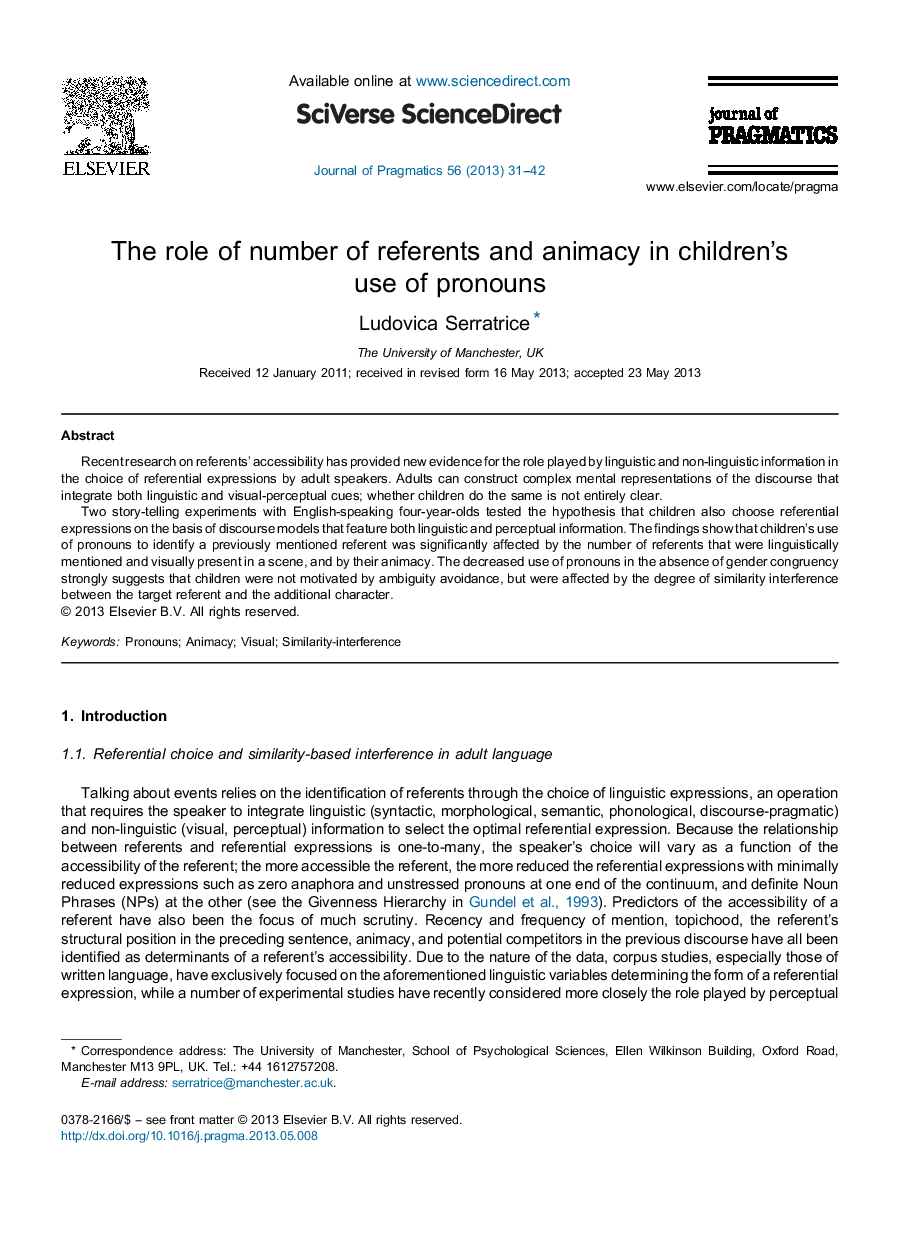| Article ID | Journal | Published Year | Pages | File Type |
|---|---|---|---|---|
| 932904 | Journal of Pragmatics | 2013 | 12 Pages |
•Two studies investigated the role of the number of referents and of animacy in children's use of referential expressions.•English-speaking four-year-olds are sensitive to both the number of previously mentioned and linguistically available referents.•Animacy congruency leads to the use of repeated Noun Phrases even in the absence of gender congruency.
Recent research on referents’ accessibility has provided new evidence for the role played by linguistic and non-linguistic information in the choice of referential expressions by adult speakers. Adults can construct complex mental representations of the discourse that integrate both linguistic and visual-perceptual cues; whether children do the same is not entirely clear.Two story-telling experiments with English-speaking four-year-olds tested the hypothesis that children also choose referential expressions on the basis of discourse models that feature both linguistic and perceptual information. The findings show that children's use of pronouns to identify a previously mentioned referent was significantly affected by the number of referents that were linguistically mentioned and visually present in a scene, and by their animacy. The decreased use of pronouns in the absence of gender congruency strongly suggests that children were not motivated by ambiguity avoidance, but were affected by the degree of similarity interference between the target referent and the additional character.
